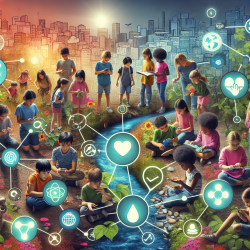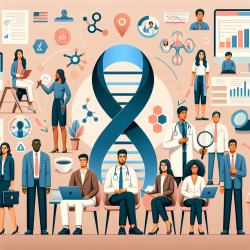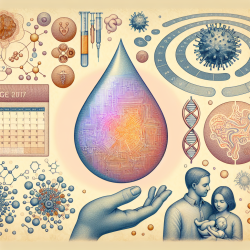Introduction: The Intersection of Environment and Children's Health
In the realm of speech-language pathology and online therapy services, understanding the broader environmental factors that impact children's health is crucial. The research article titled "Environmental health sciences education--a tool for achieving environmental equity and protecting children" by Claudio et al. (1998) provides valuable insights into how environmental education can play a pivotal role in safeguarding children's health, particularly in underserved communities.
Understanding Environmental Inequity
The research highlights that children are particularly vulnerable to the adverse effects of environmental toxins. This vulnerability is exacerbated in underserved communities where environmental pollution is disproportionately high. Asthma, for instance, is a condition that is increasingly linked to air pollution, with rising rates observed in areas like Hunt's Point in the South Bronx, New York. Such communities face significant pollution burdens, often due to the siting of facilities that emit hazardous wastes.
The Role of Environmental Health Education
To address these challenges, the authors propose a comprehensive approach that includes environmental health education as a tool for achieving environmental equity. By empowering community residents through education, they can take proactive steps in managing their environment and protecting children's health. The study emphasizes the importance of bidirectional communication between community residents, government entities, and academic institutions.
Strategies for Practitioners
For practitioners in the field of speech-language pathology, incorporating environmental health education into your practice can enhance your ability to create positive outcomes for children. Here are some strategies based on the research:
- Community Engagement: Foster relationships with community members to understand their environmental challenges and collaborate on solutions.
- Educational Workshops: Organize workshops for parents and children to educate them about environmental health risks and prevention strategies.
- Multitiered Training: Implement training programs that include community residents, parents, and children, ensuring a comprehensive understanding of environmental health.
- Participatory Research: Involve community members in research design, data collection, and analysis to ensure that interventions are relevant and effective.
Encouraging Further Research
While the study provides a robust framework for addressing environmental health inequities, there is always room for further research. Practitioners are encouraged to explore additional ways to integrate environmental health education into their practice and to contribute to the growing body of research in this field.
Conclusion: A Call to Action
By integrating environmental health education into your practice, you can play a vital role in protecting children's health and achieving environmental equity. Empowered communities are better equipped to advocate for themselves and create healthier environments for their children.
To read the original research paper, please follow this link: Environmental health sciences education--a tool for achieving environmental equity and protecting children.










